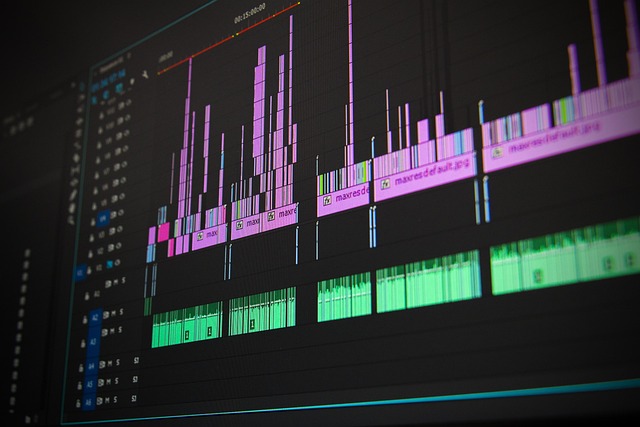DivX, introduced in the early 2000s, revolutionized video compression by significantly reducing file sizes while preserving high-quality visuals and sound, enabling faster downloads and smoother playback of HD content. Its advanced techniques eliminate unnecessary data, addressing the growing challenge of managing large video file sizes. DivX File Size Optimization employs methods like rate control and B-frame compression to intelligently reduce file sizes without compromising quality. Using tools like x264, HandBrake, or FFmpeg, users can fine-tune settings to dramatically minimize file sizes while maintaining excellent video quality, facilitating seamless sharing across platforms and saving storage space.
In today’s digital age, distributing high-quality videos without sacrificing file size is paramount. This article explores DivX, a powerful format known for its ability to compress video data significantly while preserving quality. We’ll navigate challenges posed by large file sizes, delve into optimization techniques, and introduce tools to enhance DivX compression. By following best practices, you can achieve high-quality videos with manageable file sizes, ideal for seamless sharing and streaming.
Understanding DivX and Its Impact on Video Quality and Size

DivX, a video compression format developed in the early 2000s, revolutionized how we store and share videos by significantly reducing file sizes while maintaining high-quality visuals. This technology employs advanced coding techniques to eliminate unnecessary data from video streams, resulting in smaller file sizes without sacrificing picture clarity and sound quality.
The impact of DivX on video distribution was profound. It enabled users to enjoy high-definition content over the internet with much faster download speeds and smoother playback, making it a game-changer for streaming services and online entertainment. By optimizing video compression, DivX made it feasible to store vast libraries of films and shows on personal devices, revolutionizing how people consume media and access their favorite content. This file size optimization continues to be relevant today with the growing demand for high-definition and 4K video content across various platforms.
Challenges with Large File Sizes in Videos

In today’s digital age, where video content is increasingly popular and consumed across various platforms, managing large file sizes has become a significant challenge. Videos, especially those in high-definition or 4K resolution, tend to result in massive file sizes that can hinder seamless streaming and sharing experiences. The issue lies in the sheer amount of data each frame contains, coupled with encoding methods that often bloat the overall size without necessarily enhancing visual quality. This is where DivX File Size Optimization steps in as a game-changer, aiming to address these challenges head-on.
Large video file sizes can lead to longer loading times, poor streaming performance, and difficulties in sharing content, especially on mobile networks or less powerful devices. Traditional encoding methods often fail to optimize these files without sacrificing visual integrity, making it a complex task to find the right balance between quality and size. DivX, with its advanced compression techniques, offers a solution by intelligently reducing file sizes while preserving crucial details, ensuring viewers enjoy a smooth, high-quality experience without the usual constraints of massive video files.
Techniques for Optimizing DivX File Size

Optimizing a DivX file size is an art, allowing for high-quality video with reduced storage demands. One powerful technique is rate control, which adjusts encoding speed based on scene complexity. Complex scenes with rich details are encoded at lower bitrates, while simpler ones benefit from higher rates, striking a balance between quality and size.
Additionally, utilizing b-frame (bi-predictive) frames can significantly compress video data. These frames rely on surrounding frames for prediction, reducing redundancy and file size. Advanced encoders also offer options like constant bitrate (CBR) or variable bitrate (VBR) encoding, where CBR maintains a consistent file size, while VBR adapts to scene differences, often resulting in smaller output sizes without noticeable quality loss.
Tools and Software to Enhance DivX Compression

To achieve high-quality video at a fraction of the file size, leveraging the right tools and software for DivX compression is essential. There are numerous options available that go beyond basic encoding, offering advanced features like adjustable bitrates, custom filters, and precise control over video quality. Some popular choices include x264 (a powerful encoder known for its efficiency), HandBrake (a user-friendly tool with a range of optimization settings), and FFmpeg (a versatile command-line utility capable of handling complex tasks).
These tools allow users to fine-tune their DivX file size optimization. For instance, adjusting bitrate modes like CRF (Constant Rate Factor) in x264 or using HandBrake’s built-in profiles can significantly impact video quality and file size. FFmpeg offers a wide array of filters and parameters, enabling users to tailor the compression process according to their specific needs. By taking advantage of these tools, you can ensure that your videos maintain excellent quality while reducing file sizes dramatically.
Best Practices for Achieving High-Quality, Small File Size Videos

Achieving high-quality videos with significantly reduced file sizes requires a strategic approach. One effective method is to utilize advanced encoding techniques, such as those offered by DivX. This technology employs clever compression strategies that minimize data redundancy while preserving visual detail. By optimizing settings like bitrate allocation and quantization parameters, users can dramatically shrink video file sizes without sacrificing quality.
Additionally, content creators should consider shot composition, camera angles, and lighting to ensure the final product is engaging despite its small size. Cropping or trimming unnecessary parts of the video before encoding further reduces the file size. Utilizing lower resolutions for certain sections that require less detail can also be beneficial. These practices, combined with DivX File Size Optimization techniques, enable users to share high-quality videos seamlessly across various platforms while saving storage space and improving streaming efficiency.
The pursuit of high-quality video at manageable file sizes has been revolutionized by DivX, offering a compelling solution to the challenges posed by large video files. By understanding and leveraging DivX’s capabilities, along with employing optimization techniques and utilizing specialized tools, users can achieve remarkable results in video compression without compromising on quality. Implementing best practices ensures that DivX File Size Optimization becomes an efficient and effective process, making it easier than ever to share and enjoy high-definition content seamlessly.
